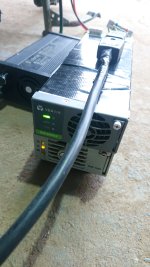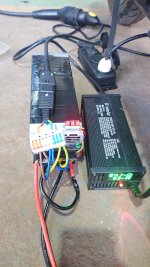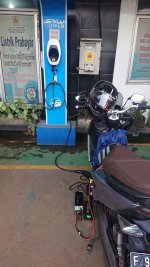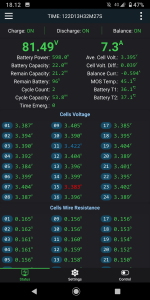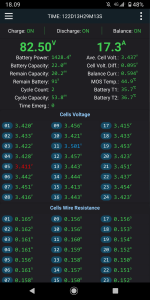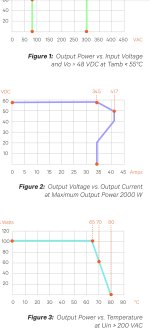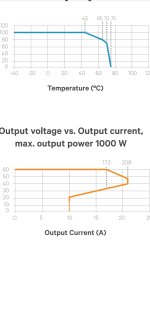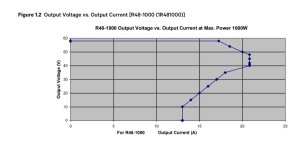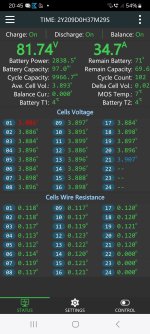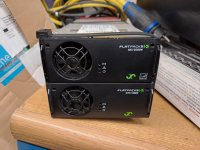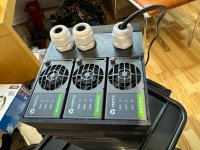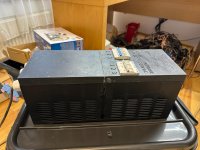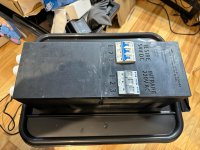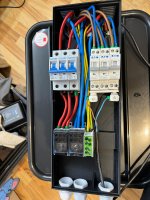Are you looking for how to talk to an RS485 transceiver chip with the ESP, or are you looking for a list of specific commands to be sent to the PSUs to get specific results?
For the former, there are libraries for some of the chips llike the MAX485 and MAX3485 (which itself comes on nice easy to use boards for stuff like this), and should be code examples in the libraries or within various other projects using 485 out there that you could borrow from, if you already know how to do ESP serial comms in general.
I don't know enough to tell if any are useful for this purpose, but there are a number of threads in the arduino.cc site about using 485, modbus, etc.
For the latter, I don't know a *complete* list of commands/etc., but there are a few in this thread, and some (possibly the same ones, as I didn't compare them) in other posts around the web about these PSUs that show up in a google search for them.
Hopefully others with more info on the commands themselves may chime in and/or post that info.
For the former, there are libraries for some of the chips llike the MAX485 and MAX3485 (which itself comes on nice easy to use boards for stuff like this), and should be code examples in the libraries or within various other projects using 485 out there that you could borrow from, if you already know how to do ESP serial comms in general.
I don't know enough to tell if any are useful for this purpose, but there are a number of threads in the arduino.cc site about using 485, modbus, etc.
For the latter, I don't know a *complete* list of commands/etc., but there are a few in this thread, and some (possibly the same ones, as I didn't compare them) in other posts around the web about these PSUs that show up in a google search for them.
Hopefully others with more info on the commands themselves may chime in and/or post that info.


